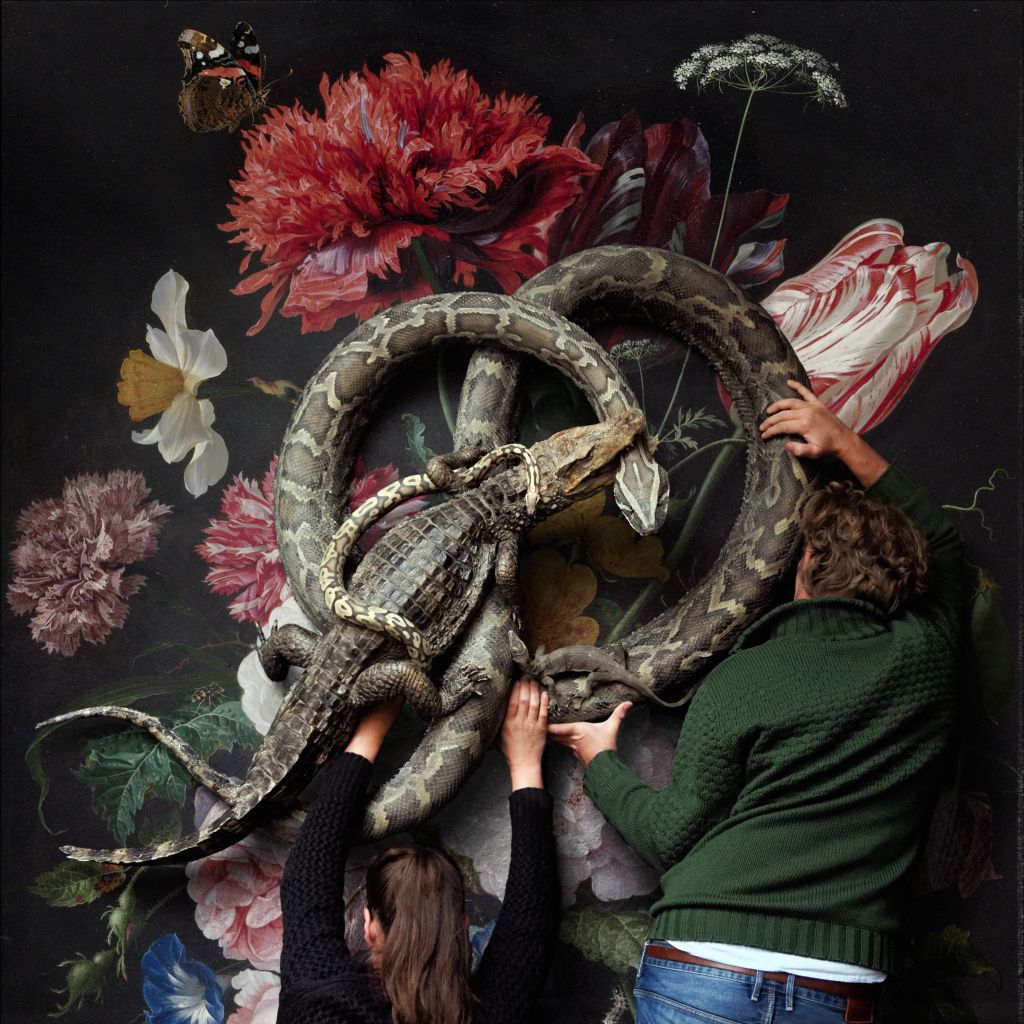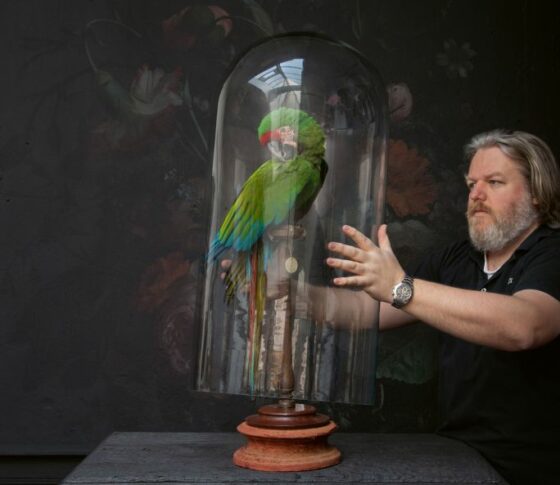Beautiful addiction: art meets taxidermy in new Amsterdam museum
Senay Boztas
Before Ferry van Tongeren saw the insides of wild animals, he thought nature was beautiful. Then this former ad man retrained as a taxidermist, hooked up with artistic partner Jaap Sinke, took inspiration from Charles Darwin – and sold most of their first Darwin, Sinke & Van Tongeren collection to Brit art sensation Damien Hirst.
Now, in a converted canal building in Amsterdam, they are showing off a collection of truly original and decidedly macabre preserved animal artworks in the new Art Zoo Museum.
“I have started to look at nature very differently because I do this work,” says Van Tongeren in a behind-the-scenes video at the start of the museum. “I think that everyone is too romantic about nature. It is incredibly cruel.”
But this exhibition – composed of two years of work as well as their decade-long collaboration – reframes the gruesome spectacle of animals ripped apart, severed limbs and broken bones into a stunning reconstruction of animal life. “What we are doing is showing nature as we would like to have it,” says Sinke.
As you enter the museum, to your left is a reconstruction of a gigantic flayed ape, a looming work of art created in material and stitching.
The next room, explains co-founder of the museum and Vrij Academie director Peter van Duinen, is a “signature work” by the artists – an explosion of parrots escaping from their cages taking up most of the space. “There is a juxtaposition,” he says, “a sort of surrealistic idea because normally they are inside.”
In fact, as visitors walk around the seven spaces of this small museum, living people are are the ones contained inside cages – and around them are traditionally preserved wild animals that have died a natural death and are now staged in surprising poses.

A crocodile hangs from a decorated ceiling, mouth gaping, like a carnivorous lampshade. A tiger turns on a high ledge, almost swallowing its tail, while birds spread their wings in a half-lit salon.
The whole museum is a throwback to how museums began, says van Duinen. “The wunderkammer or chamber of curiosities was a 16th century idea: everyone displayed their most beautiful possessions to one another,” he says.
“It is a sort of man cave…not for yourself but to show off, like rich people today with 16 cars. Cosimo I de’ Medici in Florence in the 16th century had a wunderkammer, and so did Peter the Great [Tsar of Russia] in the 18th century. It was a kind of starting point for museums and for collections.”
There is, though, a sinister thread through this collection: one room contains a mirror presenting visitors with their own reflection as the “world’s most dangerous animal”. Another room, filled with specially-grown tulips preserved in formaldehyde, reflects the 17th century “tulip mania”, when a bulb could be worth as much as a house and people ruined themselves.
The final ornate ceilings, van Tongeren’s favourite spot, are not just covered with delicate shells but with the scalpels he used in a little over a decade of artistic taxidermy.
“It’s a kind of addiction when you start collecting something,” he tells Dutch News, sitting under the ceilings in an elegant café at the back of the building. “There isn’t a moral lesson. We’re addicted to the beauty of collections, of objects, and to patina, to materials.”
He once worked at Naturalis Biodiversity Center in Leiden and would dissect animals that came in. “Some came in from breeders and zoos, and those were totally different on the inside… more or less pristine,” he says. “But wild animals, when you opened them up, were often full of growths, fractures that had healed. Some animals were completely chewed up, by their mates or by others.
“What we are doing is dressing up the fairytale we grew up with, the nature we’d like to believe in…with elegance, atmosphere, drama.”
And – adds Sinke – “beauty”.
The ArtZoo will open at Herengracht 368 on June 26. Tickets are €17.50 for adults, with discounts for Museumjaarkaart holders.
Thank you for donating to DutchNews.nl.
We could not provide the Dutch News service, and keep it free of charge, without the generous support of our readers. Your donations allow us to report on issues you tell us matter, and provide you with a summary of the most important Dutch news each day.
Make a donation